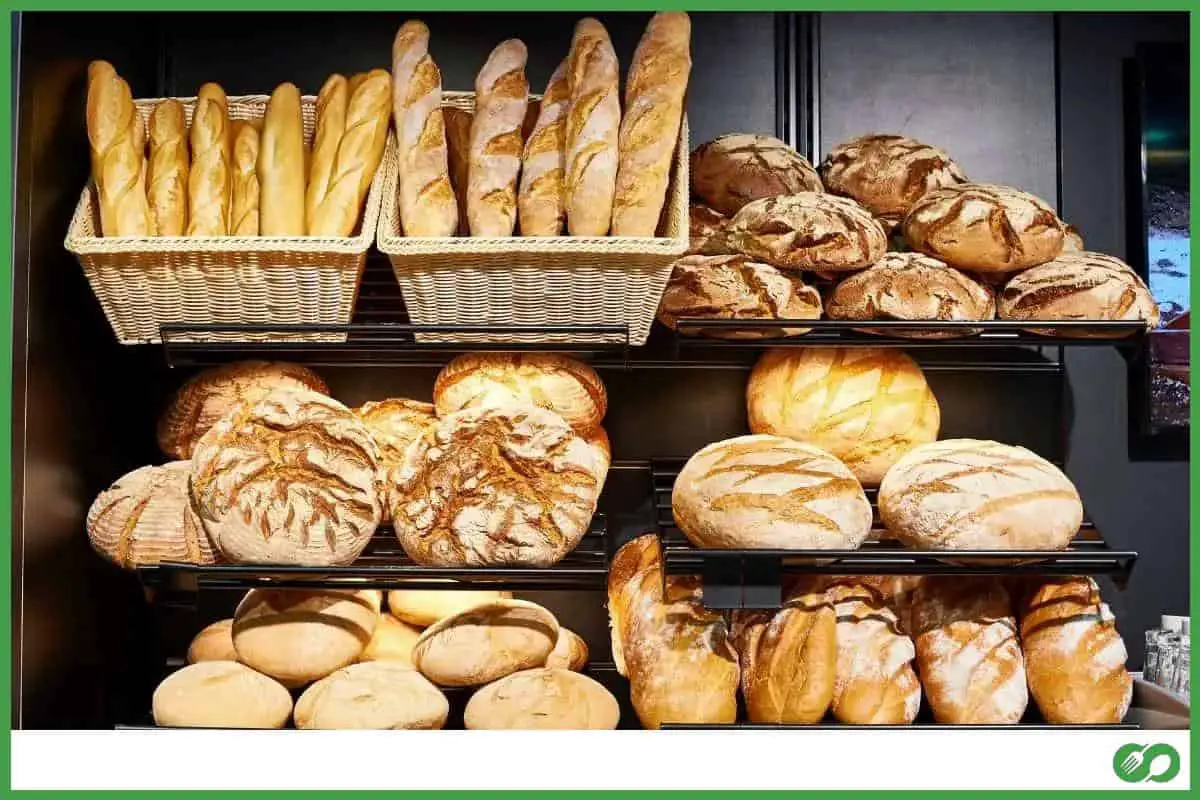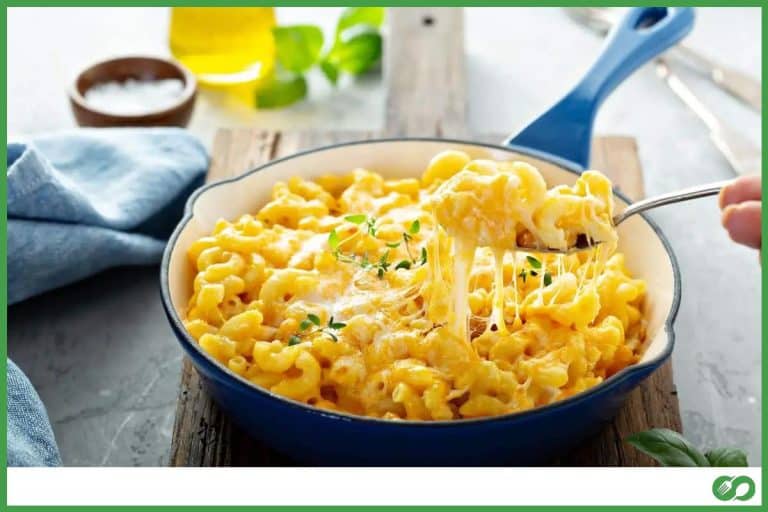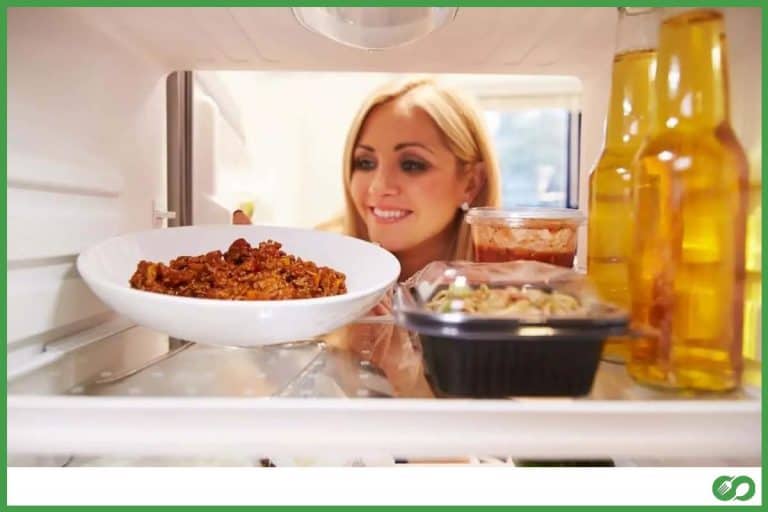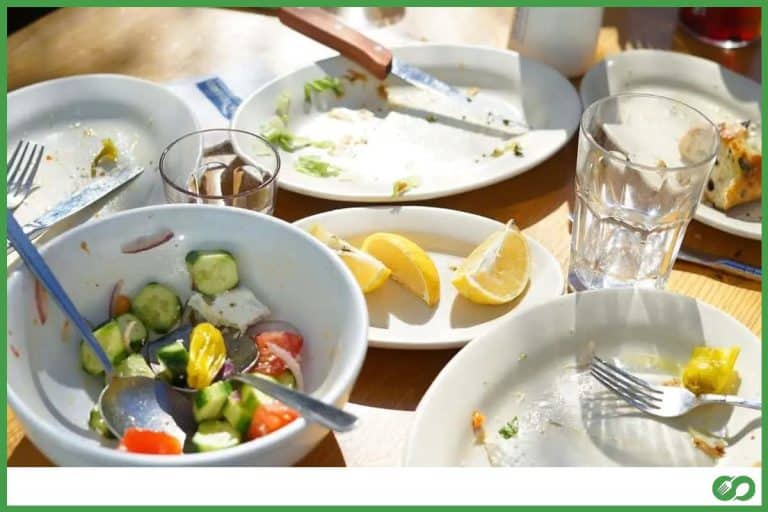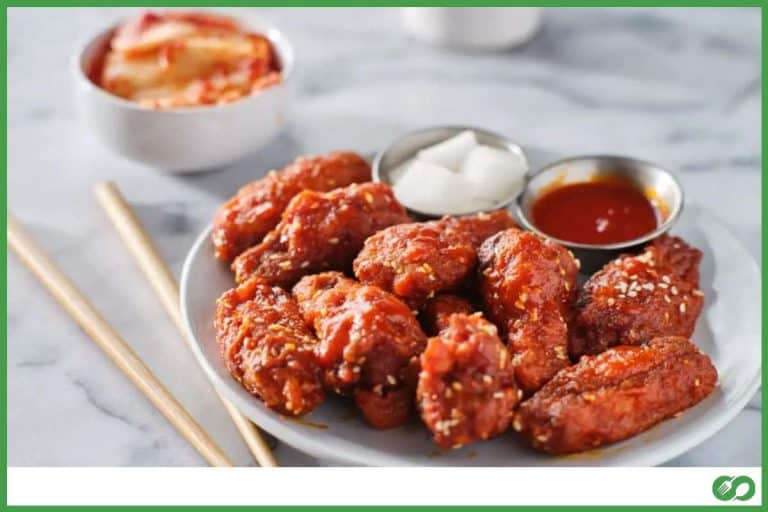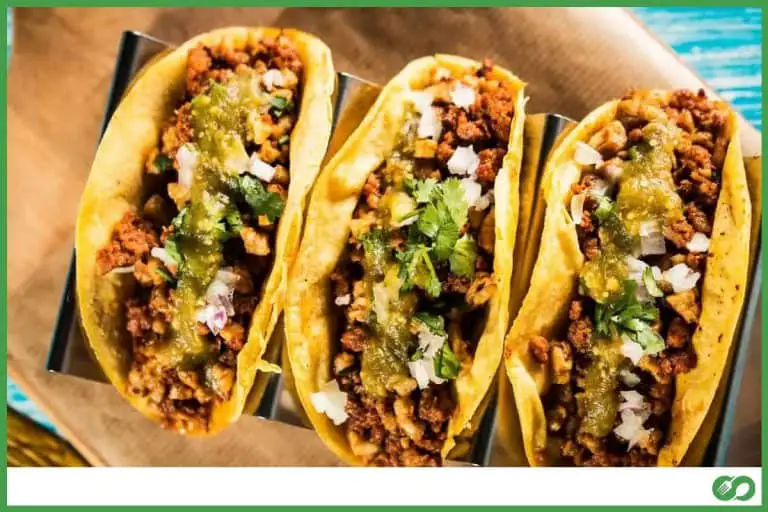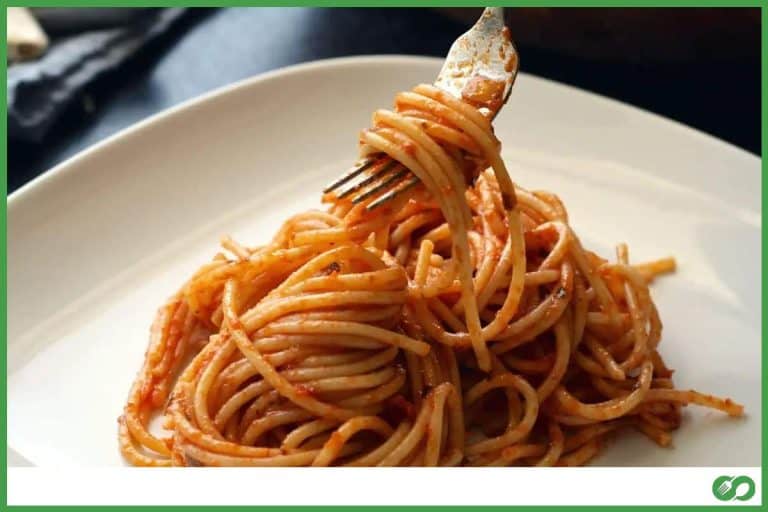What Do Bakeries Do With Leftovers?
This post may contain affiliate links which means that, if you choose to make a purchase, I may earn a small commission at no extra cost to you.
Have you ever wondered how bakeries manage to produce the perfect amounts of fresh breads, pastries, and cakes each day? Well, the truth is, they don’t. But many have come up with creative solutions for managing their excess inventory.
Some food can be stored and used later. Baked goods that lose their freshness can be repurposed to other things. It is also common to donate leftovers to food banks and homeless shelters. The rest will be thrown in the bin.
Why do bakeries have leftovers?
Often, bakers have a surplus of goodies at the end of the day. That’s because, out of necessity, they bake more than enough to go around to ensure they won’t run out, and so their cases will always be brimming with freshness.
Here are three more reasons bakers might have leftovers:
- Fluctuations in the economy
- Unpredictable weather
- Insufficient storage capacity
But, unlike turkey, stuffing, mashed potatoes, and gravy the day after Thanksgiving, bakery leftovers don’t taste better the next day. If anything, they’re dry, stale, and maybe even tasteless.
So what’s a baker to do to avoid having all that good food go to waste?
Food waste
Unfortunately, food waste has become a major problem globally.
In Great Britain, United Kingdom Parliament has reported that over 24 million slices of bread are discarded every day and that 44 percent of bread is thrown out because consumers believe it to be too old to eat.
In Australia, over 1.9 million tons of food are wasted by businesses each year.
In the United States, wasted food has reached enormous proportions. The most recent estimate published by the United States Department of Agriculture (USDA) is that we waste 30 to 40 percent of our food products, or about 72 to 133 billion pounds, annually.
And yet, 1 in 7 Americans (14.3 percent) have been reported to experience food insecurity.
The answer to the food waste problem is being addressed by many bakers. Just how are they doing that?
Solutions
Storing
Sometimes it is possible to be proactive and salvage baked goods before they reach day-old status. For example, un-iced cakes and cupcakes can be frozen and used later. That way, they may be “left over” from a previous day, but they won’t technically be “leftovers” in the usual sense.
Even before baking, cake batter can be frozen, and often it is. This does not work at all with batter made with whipped egg whites, such as that used for chiffon or angel food cakes.
However, it’s a good technique for saving extra batter intended for other things made with oil for fat, such as quick breads.
Cookie, pie, cobbler, pizza, and biscuit dough also can be stored in the freezer ahead of baking time. Raw, pre-shaped croissants and sweet rolls can be frozen, too.
Repurposing
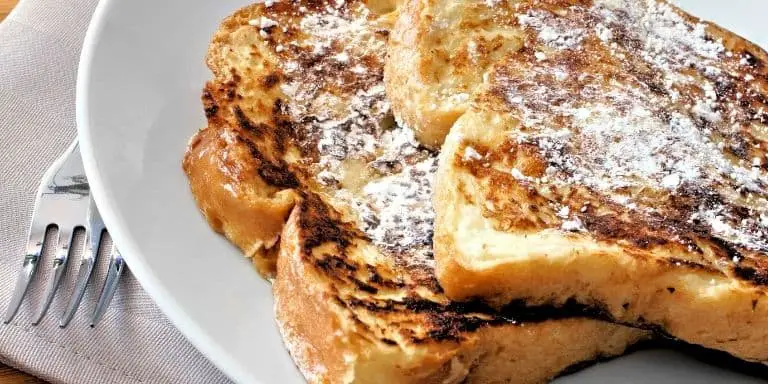
Sometimes it just isn’t possible to store old baked goods. So then what?
A few ways a bakery can use up leftover baked goods (especially if it doubles as a restaurant) is by turning them into one of the following:
- Bread crumbs
- Croutons
- French toast
- Bread pudding
Leftover bread can even be used to make beer!
Here are more ways bakeries have used leftover baked goods to create new treats:
- Some use the small scraps sliced from their specially-shaped custom cakes to make ball-shaped cakes such as snowballs and lollipops.
- Others have pulverized day-old bread and added the crumbs to their sourdough mixes.
You may not own a bakery, but you can jump on this type of baked goods bandwagon, too. If you want to try using your leftover baked goods at home, here are some suggestions:
- Attach an older slice of bread to the cut surface of a cake using toothpicks as a way of keeping the cake from drying out.
- Make bread crumbs in your food processor.
- Slice bread into cubes, sprinkle with herbs and olive oil, and bake in a 350 °F (180 °C) oven until dry and crunchy, and you’ll have yummy croutons.
- Place a torn-off hunk of stale bread in with your brown sugar. What was previously hard-as-a-rock sugar will become soft overnight.
- Make grilled cheese sandwiches.
- Turn bread into stuffing.
- Use small slices of round bread loaves as bases for bruschetta.
- And the classic solution: make bread pudding by combining bread cubes with sweetened custard and dried fruit.
Note: If you do Internet searches for recipes for any of the above, you may be asked by the websites if you’ll “accept cookies.” This does not mean they want you to join their food donation program!
Donating
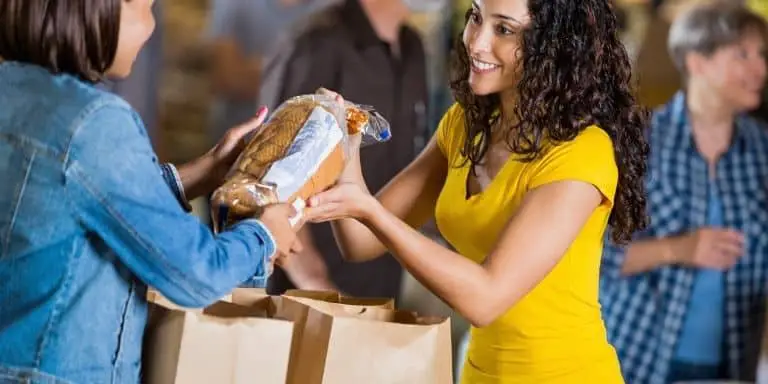
To address the issue of food waste, several bakeries, restaurants, and other food industry leaders have systems in place for quickly donating unsold food to nonprofit organizations each day.
The charitable organizations that receive their donations include:
- Hospitals
- Nursing homes
- Churches
- Food banks
- Homeless shelters
- Refugee centers
Here are some examples of bakery and food donation programs around the world:
In Europe, over 20,000 bakeries have enrolled in a program to counteract food waste. The program (actually, a software application) is called Too Good To Go. So far, the organization reports their app has saved over 23 million bakery meals from the trash bin.
A food chain that spans the Atlantic Ocean, Pret A Manger, gave away more than 800,000 meals in the year 2017 alone. Local soup kitchens, food banks, and shelters have been the recipients.
In Australia, one group at the forefront of food donations is OzHarvest. They’ve partnered with more than 3,000 businesses to gather and distribute leftover food where it’s needed. Other Australian groups of a similar nature include FoodRescue, Fareshare, Food Bank, and SecondBite.
Foodtank lists more than 50 groups in 12 countries that are working to distribute leftover food around the globe.
By far the largest food rescue group in New York City is City Harvest. One example of food they’ve received is the New York restaurant, Le Bernardin. Over 40,000 pounds of food is donated by Le Bernardin to City Harvest each year. This quantity includes a good variety of rolls and bread.
Another New York restaurant that has committed to helping stop hunger in America is Cosme. This Mexican restaurant provides leftover good food on a regular basis to Rescuing Leftover Cuisine, who find uses for the food at local soup kitchens and shelters.
To hear one of the founders of Rescuing Leftover Cuisine explain his program, watch his short video, here:
And it’s not just individual U.S. restaurants getting into the donation act. Starbucks has teamed up with both City Harvest and Feeding America with a program called Starbucks FoodShare. Starbucks says they’ve donated over 5 million meals to date.
Feeding America matches members of the food industry with charities in their very own neighborhoods through a website known as MealConnect. When food is ready to be picked up, these organizations are alerted via the MealConnect site, and the transfer takes place.
Sponsors of MealConnect include Google, Walmart, and General Mills. The website displays an active count of pounds of food recovered. That number is currently over 2 billion.
Another well-known food chain that finds a way to donate leftover baked goods is Panera. They’ve cleverly dubbed their giving program “Day-End Doughnation.”
Pizza Hut says it has found new homes for more than 100 million pounds of food over the years. So don’t worry about what happens if you’ve ordered an extra pizza by mistake. It will go to a good cause by utilizing Pizza Hut’s Harvest Program.
Cooking shows like MasterChef and The Great British Bake Off always have leftovers. Once the fantastic entries in the baking competitions have been sampled with only one bite taken, and a winner chosen, the remainder of the confection just sits there, looking a bit sad.
But wouldn’t it be happy to know that soon it will be moving on to a better place: the stomachs of the bakers and stage crew after cameras have been turned off?
And even the bits and pieces that have not been nibbled on-set find a happy home. Prue Leith (a judge on The Great British Bake Off) is said to take them home to feed her pigs!
In Australia, leftovers from the show, MasterChef, are donated to good causes like Foodbank and SecondBite.
Rising Tide of Awareness
Our mothers always told us never to waste food. That’s why there’s been a concerted effort to not let unused baked goods go to waste.
Luckily, there are many alternatives to just throwing out bakery leftovers. The adage, “waste not, want not,” is very applicable to bakeries, and one can see that it is certainly being taken to heart by the people who run them.
Through better food storage methods, food repurposing, and food donations, bakers have found ways to save money, reduce food waste, and help needy populations.
The need for leftover food is great, but due to increased awareness of food shortages and food insecurity, this need is being met by caring bakers around the world.

